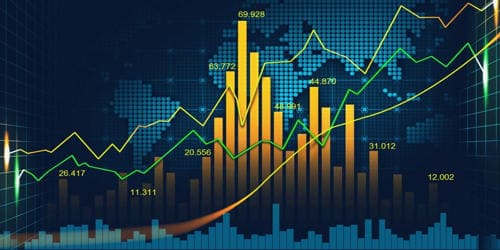The noisy market hypothesis is a financial theory that argues that the true underlying value of a company is not always efficiently calculated by looking solely at the prices of its securities. In finance, the noisy market hypothesis contrasts the efficient-market hypothesis in that it claims that the prices of securities are not always the best estimate of the true underlying value of the firm. This is in contrast to the more widely acknowledged efficient market hypothesis. Noise traders are typically non-professional individuals who act illogically, using incomplete or inaccurate data to make trades. Noise traders often make trades based on hype or rumor, rather than on solid technical or fundamental analysis or professional advice.
The noisy market hypothesis was first brought to the public attention by well-known investor and analyst Jeremy J. Siegel, who also wrote the popular Stocks for the Long Run. In the financial markets, noise can include small price corrections in the market as well as price fluctuations–called volatility–that distorts the overall trend. Noise traders trade on signals they believe to generate better than random returns, however, this belief is not well-founded. Better consideration for identifying noise trading is to understand the concept of the noise trader agenda. Market noise can make it difficult to determine what’s driving a trend or if a trend is changing or merely experiencing short-term volatility. The impact of noise traders can be significant. They cause the market to artificially react to their trades and can send prices and stock movements surging in one direction or another, even if all other traders act in a rational way.
Siegel’s hypothesis puts forward the argument that the prices of securities can be influenced by momentum traders and speculative investors. It argues that prices can be influenced by speculators and momentum traders, as well as by insiders and institutions that often buy and sell stocks for reasons unrelated to fundamental value, such as for diversification, liquidity, and taxes. In addition, investors and various institutions will often trade stocks for multiple reasons – such as to influence liquidity, avoid taxes and diversify their portfolios – that are not obviously linked to the stocks’ base value. The noisy market hypothesis does not say that every stock that changes price does so by more than what is justified by fundamentals. These temporary shocks referred to as “noise” can obscure the true value of securities and may result in the mispricing of these securities, potentially for many years. Siegel claims that these trades and influences, which he refers to as ‘noise’, can lead to securities being mispriced because their real value is difficult to accurately calculate.
















